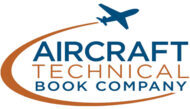Aircraft Safety
When the Wright brothers first took flight in 1903 in Kitty Hawk, North Carolina, safety was probably the furthest thing from their minds. They were more concerned with getting the first powered aircraft off the ground for a successful, sustained flight.
These innovative and determined brothers knew flying was dangerous, and they promised their father they would never fly together in their aircraft (although their father made an exception by 1910 and permitted the boys to fly for six minutes together). Outfitted in a suit and tie, Orville wasn’t heavily protected in the event their aircraft crashed into the banks of Kitty Hawk. Thankfully, he and Wilbur made many successful flights, even without any of the safety precautions we have today for aviation.
What Makes Aviation Safe
Today, aviation safety is a big deal. If you’ve ever had to remove your shoes and decant liquids into three-ounce, travel-size containers, you know it’s serious. But it’s not just protecting against individuals who may want to compromise the safety of a flight; aircraft safety is also about preventing accidents on runways, maintaining the integrity of aircraft, and navigating emergency evacuations.
Runway Safety
Not all runways are created equal. Some feature extreme grades, while others seem too short to be useful. There are a number of names for incidents encountered on runways.
- Runway Excursion: when a plane makes a wrong turn and exits incorrectly from a runway.
- Runway Overrun: this means exactly what you think it means; an aircraft has overshot the end of the runway.
- Runway Incursion: when a plane encounters another vehicle or a person on the runway.
- Runway Confusion: when the wrong runway is used for either takeoff or landing.
These problems and others are avoided by following strict Federal Aviation Administration (FAA) regulations. Air traffic control can refer to the Airport Movement Area Safety System (AMASS) for updates regarding runway activity, allowing them to intervene in order to prevent accidents. There’s also the Runway Awareness and Advisory Systems (RAAS) for pilots and crew to keep them aware of the location of the intended runway.
Ground crews and flight crews have a number of other systems in place to promote runway safety. They include:
- Instrument Landing System (ILS) – Radio navigation system for short-range communications.
- Low-Level Windshear Alert System (LLWAS) – Measures surface wind speeds and direction to assist with runway takeoff and landing.
- Microwave Landing System (MLS) – A radio guidance system that can help pilots navigate blind landings.
- Transponder Landing System (TLS) – Another type of landing system and uses an airborne transponder in conjunction with ILS.
Aircraft Safety
There are so many considerations made when designing aircraft for safety. From the fabric used on seat cushions to the construction of the wings, airplanes are designed to absorb impact to protect as many people as possible.
Fire-Resistant Fabric
The lap belt isn’t the only safety feature of your seat; the fabric is fire-resistant, and the bottom can be used as a flotation device in the event of a water landing.
Floor Promisimity Emergency Escape Path Marking System
If the cabin loses power, the markings on the floor can lead you to the exit. Featuring photoluminescence (glow-in-the-dark) technology, the lines on either side of the aisle are meant to be seen even when visibility is hindered.
Triangles and Hooks
Inside the aircraft, there are black triangles above certain windows. This indicates which windows should be used to provide the best view of the wings from inside the cabin. If the crew needs to check for any visible issues on the wings, triangle marks the spot.
Speaking of the wings, the yellow hooks situated on the top of each can be used to attach ropes to assist with emergency evacuation of the aircraft.
Emergency Slides
The first implementation of an emergency, fabric slide was in the 1940s. By the late 50s, inflatable slides were replacing fabric, but they were difficult to deploy due to their bulk. Half a minute may not seem like a long time, but when you’re attempting to position and inflate a slide for an emergency evacuation, every second counts.
It didn’t take long for new slides to be debuted, with some including a raft as well. In 1971, deflated slides/rafts could be stored on aircraft doors instead of above the seats, streamlining the procedure for deployment and inflation.
Powerful Engines
Let’s consider some of the other exterior safety features of modern aircraft. Did you know that jet engines are so powerful, one can be used to keep a plane aloft even if the other fails? As long as the plane continues to move forward, the wings do the heavy lifting and help manipulate air pressure to keep the plane airborne.
Flexible Wings
As you can imagine the wings of an aircraft carry a lot of weight, both literally and figuratively. They’re responsible for creating lift during flight, and they are designed to withstand even the toughest turbulence. Like a tree, airplane wings flex in the wind to avoid breaking. And thanks to wing spars (metal beams) running the length of each wing, there is a stable core to prevent wings from snapping off the aircraft due to wind.
Impact Absorption
Every part of an aircraft is designed to reduce the amount of impact a passenger or crew member will personally experience. When the first passenger planes took flight in the 1930s, the passenger seats could absorb six times the force of gravity (6g). By 1950, the standard was raised to 9g. Now, nearly a century later, a seat can absorb 16g.
The bottom line is that today, modern aircraft are designed with crashes in mind. As a result, they are carefully crafted to include safety features that prevent loss of life if the unthinkable happens. Statistically, air travel is much safer than traveling by car; the odds of experiencing a fatal plane crash are less than one in 12 million.
